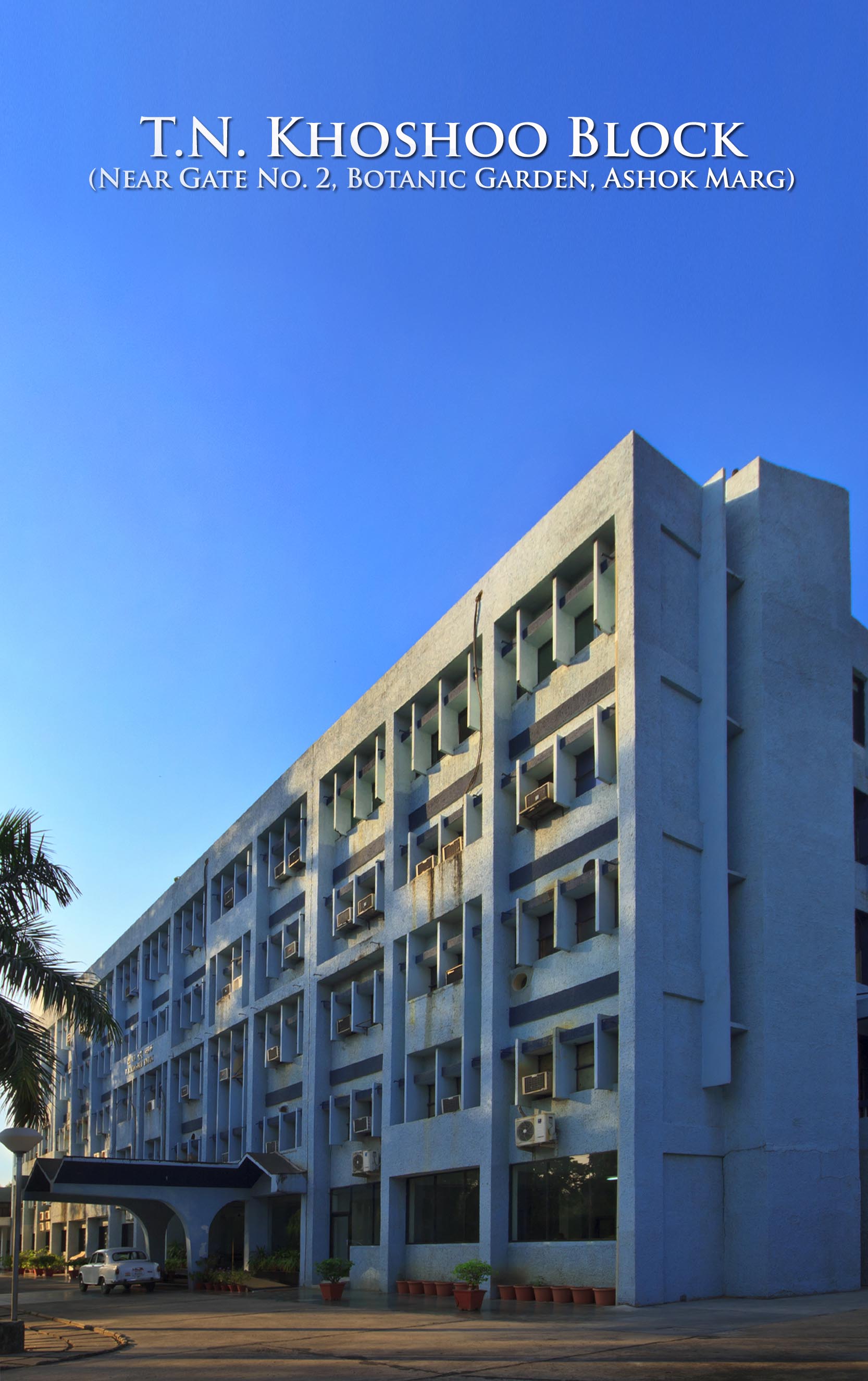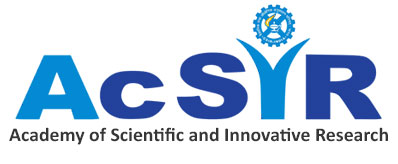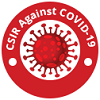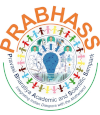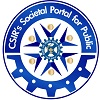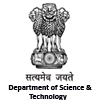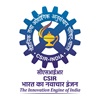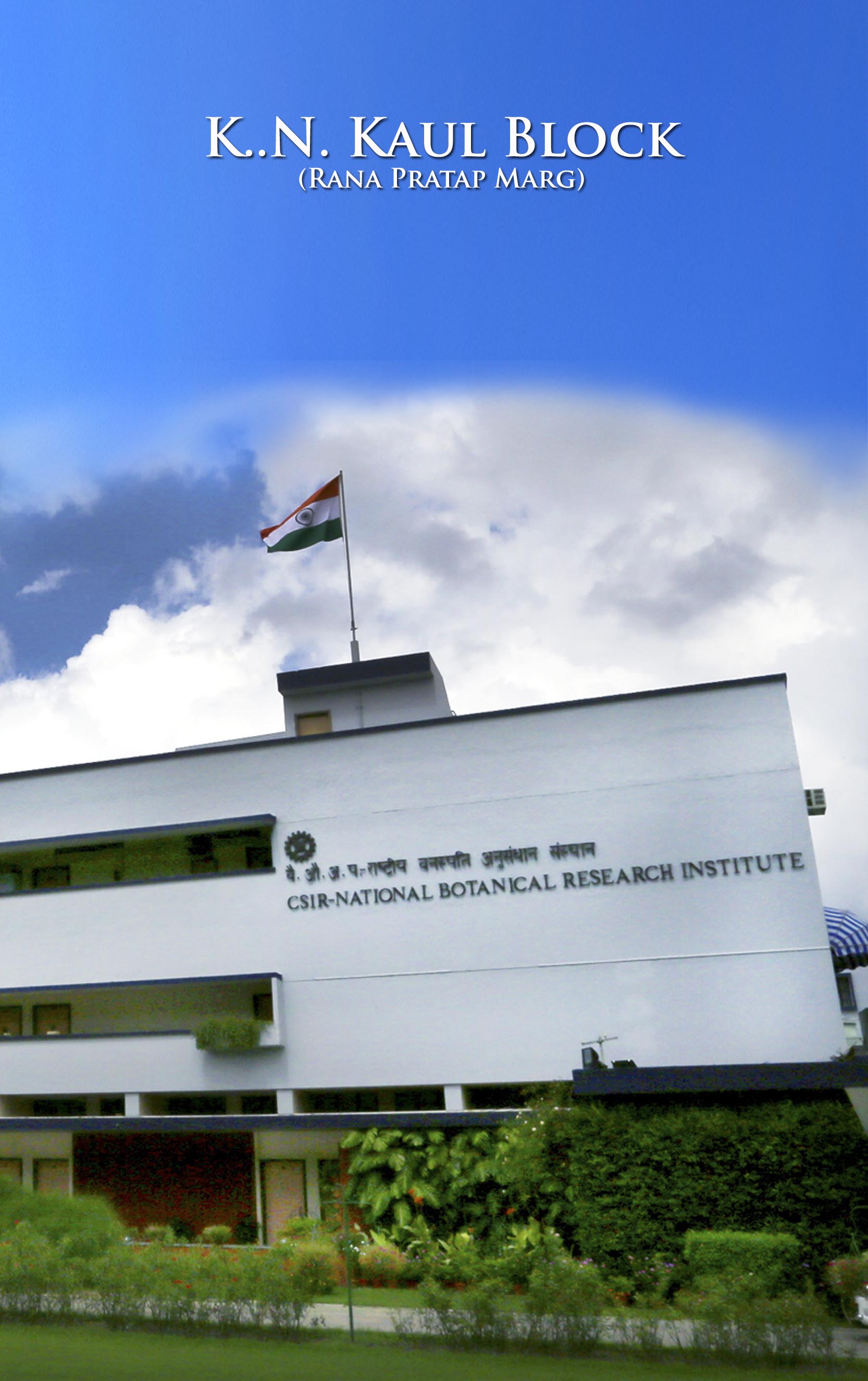

Dr. S.N. Jena
Senior Principal Scientist
Research Interests
My research focuses on the genetic improvement of economically relevant traits in crops like Cotton, Opium poppy and Hemp. Our lab is specifically focused onthe genetic improvement of economically relevant traits in above mentioned crops. We use a number of major crop species as of our study system to understand the underlying molecular mechanism of quantitative traits. Besides, genetic structure, molecular phylogeny, population genetics and plant invasion are of our other interest research focus. All the activities are given below headings:
– Genetic Mapping, consensus mapping and Dissecting Quantitative Trait Loci (QTL).
– QTL hotspot, their targeted sequencing, and functional characterization.
– Initiative for development of improved variety with molecular/sequence based breeding programs.
– GWAS study for expediting trait associated genes/ loci linking functional traits.
– FCM based genome and ploidy estimation.
Dr. S.N. Jena
Senior Principal Scientist
Research Summary
Genetic Mapping, consensus mapping and Dissecting Quantitative Trait Loci (QTL)
The low rate of polymorphism among Gossypium species has been a major constraint in the development of a high-density genome map. To overcome such constraints, consensus map based on more than one mapping population is the right choice of genetic mapping in which maximum number of marker could be mapped to make the map denser over the individual genetic map with single population. The innovative approach therefore provides new opportunities to come up with dense consensus map in desi cotton as well as tetraploid cotton and link genotype to phenotype based on QTLs governing various traits. Such consensus map and QTLs in desi cotton are likely to be novel and significant with respect to their impact on breeding programme, providing a highly desirable reference consensus genetic map in cotton.
QTL hotspot, their targeted sequencing, and functional characterization
Cotton productivity and yield strongly depends on phenotypic traits such as boll weight, boll size and fiber quality. Out of all these traits, boll weight (BW) is considered to be the most important component for cotton yield. However, there is an evolutionary trade-off between boll weight, size and their number. Most of the previous studies have focused primarily on identifying the QTLs associated with cotton BW trait. However no such attempts have been made to use these QTLs to improve the BW trait. Moreover, the fundamental understanding of BW genomics is still unclear and yet to be unravelled. We have performed a meta-analysis to identify the QTLs associated with cotton BW from the available public domain data.
GWAS study for expediting trait associated genes/ loci linking functional traits
Genome wide association study or GWAS is a useful molecular tool to identify genetic variation of a single trait across different individuals within a population. It helps to identify single nucleotide polymorphisms (SNPs) associated with a functional trait. In contrast, ECOTILLING is a reverse genetics approach to identify polymorphisms within the individuals of a population by identifying the point mutations.We are interested to study Papaver somniferum as our model system to understand the association genetics underlying the high thebaine and papaverine production.
Draft genome sequencing and its application in molecular breeding for crop improvement
Plants with medicinal importance have always been an interest for research due to the presence of potent chemical compounds that could be used as drugs for curing chronic diseases. Any perturbations in the gene(s) and/or pathway(s) might influence the production of such metabolites and therefore would directly or indirectly contribute for genetic improvement of the species. Thus, draft and complete genome are the requisite asset for any crop improvement program. We have initiative a draft genome in Commiphorawightii, commonly known as guggul or gugglu, mainly known for guggulsterone with its enormous medicinal properties.
Initiative for development of improved variety with molecular/sequence based breeding programs
Cotton fiber yield is a complex trait with many components. Cotton Boll weight (BW) amongst all is believed to be the key and promising component for cotton yield. Although several studies have been conducted for underlying cotton fiber yield for last several years, still it is a matter of further exploration and concern. Various numbers of quantitative trait loci (QTLs) affecting BW classifying major and minor QTLs are reported in public domain. However, no study has been performed for the BW improvement using these QTLs. Thus, we have started an initiative to develop high boll weight variety with molecular breeding program.
Flow Cytometry (FCM) based genome and ploidy estimation
Flow cytometry (FCM) is one of the most reliable, convenient and fast method for the estimation of nuclear DNA content. The sample preparation is very easy, fast and cost effective. This method requires only a few milligrams of tissue. The nuclei extracted is stained with different fluorochromes like propidium iodide (PI), 4,6-diamidino-2-phenylindole (DAPI) and individually measured which facilitates the asynchronous analysis of dividing cells and detection of cells with different DNA contents. Therefore, this method allows us to measure nuclear DNA with high precision, with coefficients of variation (CV) of the DNA peaks generally ranging from 1 to 5%. The fluorescence intensities are depicted in the form of density and histogram plots. The mean peak position in the histogram plot were analysed for the calculation of 2C DNA content and ploidy level. Currently, nuclear DNA and ploidy level estimation of oak and banana has been completed. For different oak species the estimated 2C DNA content ranged from 2.25-2.55pg. The comparative analysis of G0/G1peak position among different oak species with the reference standard was also analysed. Similarly, for Musa species it was found to range of 1.1-1.9pg of total 2C nuclear DNA. The ploidy levels of different Musa germplasms in CSIR-NBRI experimental field were estimated using different Musa standards as reference. The ploidy level varied from diploid to triploid. Thus the study would help to know the approximate genome content and ploidy levels of different plant species.
Dr. S.N. Jena
Senior Principal Scientist
Publications
– Anath Bandhu Das, Subrat Kumar Dehery, Kiran Bhasker, Satya Narayan Jena, Rabindra Kumar Sinha 2019. A New Seeded Diploid Indian Accession of Musa laterita of Section Rhodochlamys From Gangtok, Sikkim With Morphology, Chromosome Number and Genome Size. Cytologia (Accepted)
– Sinha, R.K., Saha, P.R., Das, A.B., Jena, S.N. and Sinha, S., 2018. In Vitro Clonal Propagation of Musa Sp. Cultivar Gopi: A Palatable Banana of Tripura, India. American Journal of Plant Biology, 3(1), p.12.
– Pandey, S., Ansari, W.A., Choudhary, B.R., Pandey, M., Jena, S.N., Singh, A.K., Dubey, R.K. and Singh, B., 2018. Microsatellite analysis of genetic diversity and population structure of hermaphrodite ridge gourd (Luffa hermaphrodita). 3 Biotech, 8(1), p.17.
– N.K. Chrungoo, G. R. Rout, S. P. Balasubramani, P. E. Rajasekharan, K. Haridasan, B. R. P. Rao, R. Manjunath, G. Nagduwar, P. Venkatasubramanian, A. Nongbet, M. Hynniewta, D. Swain, S. Salamma, K. Souravi, S. N. Jena and S. K. Barik 2018 Establishing taxonomic identity and selecting genetically diverse populations for conservation of threatened plants using molecular markers. Current Science, 114(3), p.539.
– Tripathi, P.K., Jena, S.N., Rana, T.S. and Sathyanarayana, N., 2018. High levels of gene flow constraints population structure in Mucuna pruriens L.(DC.) of northeast India. Plant gene, 15, pp.6-14.
– Sardar, S.S., Pradhan, K., Shukla, R.P., Saraswat, R., Srivastava, A., Jena, S.N. and Das, A.B., 2016. In silico mining of EST-SSRs in Arachis hypogaea L. and their utilization for genetic structure and diversity analysis in cultivars/breeding lines in Odisha, India. Molecular breeding, 36(4), p.49.
– Verma, N., Jena, S.N., Shukla, S. and Yadav, K., 2016. Genetic diversity, population structure and marker trait associations for alkaloid content and licit opium yield in India-wide collection of poppy (Papaver somniferum L.). Plant Gene, 7, pp.26-41.
– Srivastava, A., Sawant, S.V. and Jena, S.N., 2015. Microarray-based large scale detection of single feature polymorphism in Gossypium hirsutum L. Journal of genetics, 94(4), pp.669-676.
– Jena, S.N., Verma, S., Nair, K.N., Srivastava, A.K., Misra, S. and Rana, T.S., 2015. Genetic diversity and population structure of the mangrove lime (Merope angulata) in India revealed by AFLP and ISSR markers. Aquatic Botany, 120, pp.260-267.
– Jena, S.N., Verma, S., Nair, K.N., Srivastava, A.K., Misra, S. and Rana, T.S., 2015. Genetic diversity and population structure of the mangrove lime (Merope angulata) in India revealed by AFLP and ISSR markers. Aquatic Botany, 120, pp.260-267.
– Anand, K.K., Jena, S.N., Chaudhary, L.B. and Singh, M., 2016. Conflict between morphological and molecular data: A case study of Ficus krishnae (Moraceae). Phytotaxa, 247(2), pp.143-147.
– Sardar, S.S., Pradhan, K., Shukla, R.P., Saraswat, R., Srivastava, A., Jena, S.N. and Das, A.B., 2016. In silico mining of EST-SSRs in Arachis hypogaea L. and their utilization for genetic structure and diversity analysis in cultivars/breeding lines in Odisha, India. Molecular breeding, 36(4), p.49.
– Mishra, B.K., Mishra, R., Jena, S.N. and Shukla, S., 2016. Gene actions for yield and its attributes and their implications in the inheritance pattern over three generations in opium poppy (Papaver somniferum L.). Journal of genetics, 95(3), pp.705-717.
– Rai, K.M., Singh, S.K., Bhardwaj, A., Kumar, V., Lakhwani, D., Srivastava, A., Jena, S.N., Yadav, H.K., Bag, S.K. and Sawant, S.V., 2013. Large‐scale resource development in G ossypium hirsutum L. by 454 sequencing of genic‐enriched libraries from six diverse genotypes. Plant Biotechnology Journal, 11(8), pp.953-963.
– Srivastava, A., Jena, S.N., Ranjan, A., Kavita, P., Asif, M.H., Bag, S.K., Shukla, R.P., Yadav, H.K. and Sawant, S.V., 2013. Development of molecular markers from Indian genotypes of two Gossypium L. species. Plant Breeding, 132(5), pp.506-513.
– Anand, K.K., Jena, S.N. and Chaudhary, L.B., 2012, June. Reassessment of the Taxonomic Status of Astragalus malacophyllus Benth. ex Bunge (Fabaceae) Based on Morphology and nrDNA Internal Transcribed Spacer Sequence Data. In Proc Indian natn Sci Acad (Vol. 78, No. 2, pp. 171-187).
– Srivastava, A., Jena, S.N., Ranjan, A., Kavita, P., Asif, M.H., Bag, S.K., Shukla, R.P., Yadav, H.K. and Sawant, S.V., 2013. Development of molecular markers from Indian genotypes of two Gossypium L. species. Plant Breeding, 132(5), pp.506-513.
– Singh, R.K., Jena, S.N., Khan, S., Yadav, S., Banarjee, N., Raghuvanshi, S., Bhardwaj, V., Dattamajumder, S.K., Kapur, R., Solomon, S. and Swapna, M., 2013. Development, cross-species/genera transferability of novel EST-SSR markers and their utility in revealing population structure and genetic diversity in sugarcane. Gene, 524(2), pp.309-329.
– Jena, S.N., Srivastava, A., Rai, K.M., Ranjan, A., Singh, S.K., Nisar, T., Srivastava, M., Bag, S.K., Mantri, S., Asif, M.H. and Yadav, H.K., 2012. Development and characterization of genomic and expressed SSRs for levant cotton (Gossypium herbaceum L.). Theoretical and Applied Genetics, 124(3), pp.565-576.
– Ranjan, A., Nigam, D., Asif, M.H., Singh, R., Ranjan, S., Mantri, S., Pandey, N., Trivedi, I., Rai, K.M., Jena, S.N. and Koul, B., 2012. Genome wide expression profiling of two accession of G. herbaceum L. in response to drought. BMC genomics, 13(1), p.94.
– Kumar, S., Nair, K.N. and Jena, S.N., 2013. Molecular differentiation in Indian Citrus L.(Rutaceae) inferred from nrDNA ITS sequence analysis. Genetic resources and crop evolution, 60(1), pp.59-75.
– Jena, S.N., Srivastava, A., Singh, U.M., Roy, S., Banerjee, N., Rai, K.M., Singh, S.K., Kumar, V., Chaudhary, L.B., Roy, J.K. and Tuli, R., 2012. Analysis of genetic diversity, population structure and linkage disequilibrium in elite cotton (Gossypium L.) germplasm in India. Crop and Pasture Science, 62(10), pp.859-875.
– Das, A.B., Jena, S., Pradhan, C. and Chand, P.K., 2011. Genetic variability among male populations of a minor mangrove Excoecaria agallocha L. as evident by chromosome morphology and DNA markers. The Nucleus, 54(1), pp.39-47.
– Jena, S., Kumar S and Nair KN. 2009. Molecular phylogeny in Indian Citrus L. (Rutaceae) inferred through PCR-RFLP and trnL-trnF sequence data of chloroplast DNA. Science Horticurae 119:403-416.
– Verma, PC, Chakrabartty, D, Jena S., Mishra DK, Singh PK Sawant SV and Tuli R. 2009. The extent of genetic diversity among Vanilla species: Comparative results for RAPD and ISSR. Industrial crops & products 29 : 581-589.
– Kumar S., Jena S., Nair KN. 2010. Assessment of genetic diversity Indian Wild Orange (Citrus indica Tanaka) through ISSR markers. Scientia Horticulturae 123 (2010) 350–359.
Dr. S.N. Jena
Senior Principal Scientist
Patents
Dr. S.N. Jena
Senior Principal Scientist
Research Scholars
Dr. Gopal Ji Tiwari, RA
Ms. Padma Tamang, UGC-SRF
Ms. Babita Joshi, INSPIRE-SRF
Ms. Shruti Rai, PA-II
Mr. Rudra Banerjee, PA-II
Dr. S.N. Jena
Senior Principal Scientist
Address
Plant Molecular Genetics Laboratory
CSIR-National Botanical Research Institute, Rana Pratap Marg, Lucknow-226001
Email:satyanarayan@nbri.res.in/ satyanarayanjena2005@yahoo.co.in
Phone No.: 0522-2297950
